
Palm Sunday is the Christian moveable feast that falls on the Sunday before Easter. The feast commemorates Christ's triumphal entry into Jerusalem, an event mentioned in each of the four canonical Gospels. Its name originates from the palm branches waved by the crowd to greet and honor Jesus as he entered the city. Palm Sunday marks the first day of Holy Week; in Western Christianity, this is the beginning of the last week of the solemn season of Lent, preceding Eastertide, while in Eastern Christianity, Holy Week commences after the conclusion of Great Lent.
Liberation theology is a Christian theological approach emphasizing the liberation of the oppressed. It engages in socio-economic analyses, with social concern for the poor and political liberation for oppressed peoples and addresses other forms of inequality, such as race or caste.
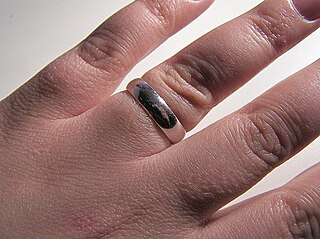
A wedding ring or wedding band is a finger ring that indicates that its wearer is married. It is usually forged from metal, traditionally gold or another precious metal. Rings were used in ancient Rome during marriage.

A wreath is an assortment of flowers, leaves, fruits, twigs, or various materials that is constructed to form a circle.

A flaming chalice is the most widely used symbol of Unitarianism and Unitarian Universalism (UUism) and the official logo of the Unitarian Universalist Association (UUA) and other Unitarian and UU churches and societies.
Quimbanda, also spelled Kimbanda, is an Afro-Brazilian religion practiced primarily in the urban city centers of Brazil. Quimbanda practices are typically associated with magic, rituals with Exus, and Pombagiras spirits. Quimbanda was originally contained under the religious tradition of Macumba. In the early years of the 21st century some began to assert that Quimbanda was totally separate from Umbanda. Umbanda represented the more Europeanized traits of the religion. Quimbanda has continued to insist that it is a distinct religion, while rejecting Catholic and Kardecist Spiritist influences that have penetrated Umbanda and other Afro-Brazilian religions.
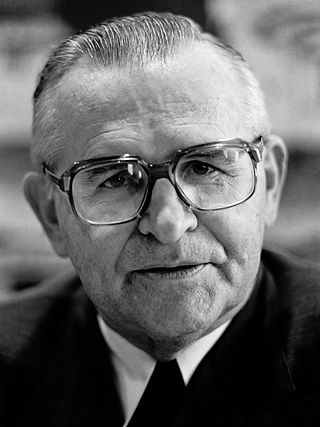
Paulo Evaristo Arns OFM was a Brazilian prelate of the Catholic Church, who was made a cardinal and the Archbishop of São Paulo by Pope Paul VI, and later became cardinal protopriest. His ministry began with a twenty-year academic career, but when charged with responsibility for the Sao Paulo Archdiocese he proved a relentless opponent of Brazil's military dictatorship and its use of torture as well as an advocate for the poor and a vocal defender of liberation theology. In his later years he openly criticized the way Pope John Paul II governed the Catholic Church through the Roman Curia and questioned his teaching on priestly celibacy and other issues.

The Anglican Episcopal Church of Brazil is the 19th province of the Anglican Communion, covering the country of Brazil. It is composed of nine dioceses and one missionary district, each headed by a bishop, among whom one is elected as the Primate of Brazil. The current Primate is Marinez Rosa dos Santos Bassotto. IEAB is the oldest non-Catholic church in Brazil, originating from the Treaty of Commerce and Navigation signed in 1810 between Portugal and the United Kingdom which allowed the Church of England to establish chapels in the former Portuguese colony. In 1890 American missionaries from the Episcopal Church established themselves in the country aiming to create a national church; unlike the English chapels, they celebrated services in Portuguese and converted Brazilians. The Anglican community of Brazil was a missionary district of the Episcopal Church until 1965, when it gained its ecclesiastical independence and became a separate province of the Anglican Communion. Twenty years later, IEAB began to ordain women. It preaches a social gospel, being known for its commitment to fight against problems that affect vast portions of the Brazilian society, such as social inequality, land concentration, domestic violence, racism, homophobia and xenophobia. Its stance as an Inclusive Church has caused both schisms and the arrival of former Catholics and Evangelicals in search of acceptance.
A base community is a relatively autonomous Christian religious group that operates according to a particular model of community, worship, and Bible study. The 1968 Medellín, Colombia, meeting of Latin American Council of Bishops played a major role in popularizing them under the name basic ecclesial communities. These are small groups, originating in the Catholic Church in Latin America, who meet to reflect upon scripture and apply its lessons to their situation.
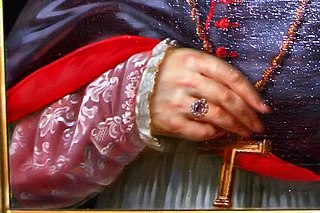
An ecclesiastical ring is a finger ring worn by clergy, such as a bishop's ring.
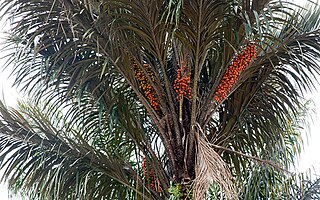
Astrocaryum vulgare is a very spiny palm native to the Guianas and the Amazon. It is species which has greatly benefited from deforestation, as it cannot grow in undisturbed rainforest. In Brazil it is considered typical of Pará state in the north of the lower Amazon. This plant has edible fruit.
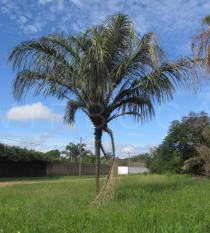
Astrocaryum aculeatum is a palm native to tropical South America and Trinidad. It grows up to 15 m (49 ft) tall and is usually solitary. It has ascending leaves, erect inflorescence, and yellow fruit.

The palm branch, or palm frond, is a symbol of victory, triumph, peace, and eternal life originating in the ancient Near East and Mediterranean world. The palm (Phoenix) was sacred in Mesopotamian religions, and in ancient Egypt represented immortality. In Judaism, the lulav, a closed frond of the date palm is part of the festival of Sukkot. A palm branch was awarded to victorious athletes in ancient Greece, and a palm frond or the tree itself is one of the most common attributes of Victory personified in ancient Rome.

Christian symbolism is the use of symbols, including archetypes, acts, artwork or events, by Christianity. It invests objects or actions with an inner meaning expressing Christian ideas.
The option for the poor, or the preferential option for the poor, is a principle of Catholic social teaching, explicitly articulated in the latter half of the 20th century. The concept was first articulated within Latin American liberation theology, and was championed by many Latin American Christian democratic parties at the time.

The Catholic Church in Latin America began with the Spanish colonization of the Americas and continues up to the present day.
This article details the history of the Catholic Church in Brazil from the colonial era until the modern era. The Federative Republic of Brazil is the largest country in South America. It is the world's fifth largest country, both by geographical area and by population with over 201 million people. Catholicism is the country's predominant faith with approximately 64.6% of the population identifying as a member of the religion. Brazil has the world's largest Catholic population.

The Ticuna are an indigenous people of Brazil (36,000), Colombia (6,000), and Peru (7,000). They are the most numerous tribe in the Brazilian Amazon.
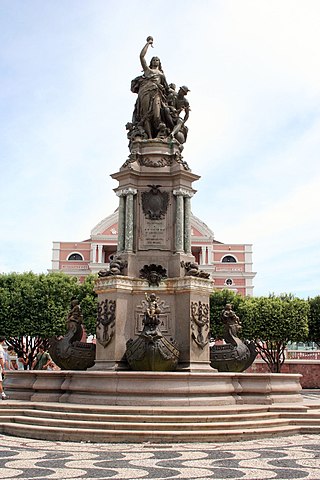
Monument Abertura dos Portos is located in the Largo de São Sebastião, in front of the Amazon Theatre, in the city of Manaus, Brazil. It was inaugurated in 1900 to commemorate the liberation of the ports of the Amazon River to foreign trade, in 1866.
Latin American liberation theology is a synthesis of Christian theology and Marxian socio-economic analyses, that emphasizes "social concern for the poor and political liberation for oppressed peoples". Beginning in the 1960s after the Second Vatican Council, liberation theology became the political praxis of Latin American theologians such as Gustavo Gutiérrez, Leonardo Boff, and Jesuits Juan Luis Segundo and Jon Sobrino, who popularized the phrase "preferential option for the poor". It arose principally as a moral reaction to the poverty and social injustice in the region, which Cepal, a leftist think tank, deemed the most unequal in the world.















